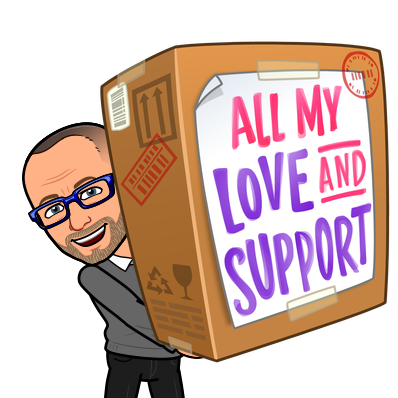Technology can feel very daunting in an elementary classroom, but it does not have to. Teachers have been teaching for years before technology, as we know it, even came into the picture. When the first pencil became the “new thing,” we probably had someone who scoffed at the notion of using lead as a writing utensil. The exact definition of technology is something that makes work easier. This is what technology in the classroom can and should be doing. Streamlining the effort of work is the purpose of using technology in our lessons.
The other part of using technology in the classroom is to teach students the proper usage. Technology can become a distraction and an interruption in the learning process. I have had teachers tell me they are not using technology at all, then complain their students take too long to log in to the device. Practice and being proactive is the key to using technology in your classroom. This is not an automatic practice nor an easy task at first. With practice, the time it takes for students to navigate learning resources will streamline. The more students learn, the more they will know, this is the case in using technology also.
Another misconception when using technology is the concept, “more is better.” This is not the case. In some instances, one technology used correctly and entirely is more powerful than many tools used halfway. Take Google Docs as an example. Google Docs can meet most needs in the classroom. Docs can be used as a presentation tool, infographic creator, close reading resource, differentiation in the area of speech to text and audio to read, data tracking, book creator, and many more. Having students create their rough draft using speech to text then print it for them to edit. This practice will allow students to speak freely without worrying about typing or spelling. It is not a written law that students have to create only with pencil and paper. Allow for the option; this is the key to using technology.
Technology, Pedagogy, and Content Knowledge (TPACK) have to be balanced in today’s classroom. Plenty of research has proven that the balance of technology and purpose is critical in moving a class from average to above-average academically. This is mostly because the technology allows students and educators access to outside resources. Schools who do not embrace this as fact are doing a disservice to our future leaders. Embracing the balance of TPACK should be a common practice among administers, which will model best practices for their educators and students. To learn more about TPACK, click the link provided here.
Technology is not the goal or destination. Technology is a vessel to which we use to travel more efficiently. The real question is, how can technology aid me in the classroom? The first step to answering this question is knowledge. Look at the learning goal, then chose the strategy, then LASTLY select the tool. If you don’t know the objective, you will never arrive at that goal. If your goal is to have your students understand “X,” then decide how you help them to understand “X” and choose the tool to reinforce that strategy. If you are at a loss for the strategy, Dr. John Hattie and Dr. Robbert Marzano may be able to help. Both researchers have completed extensive research on this topic, and you can read more using this link.
Last thoughts
If you want to fight and resist technology usage because you are not comfortable, then your students will suffer. As educators, our job is to support and prepare our students as they grow. If we do not allow them to learn proper technology usage, then they will learn on their own. In some cases, this causes misconceptions in their learning journey. You, as an educator, are the best at what you do because you have learned from others. Embracing technology affords your students to learn from you. Students need to be allowed to fail in a safe and caring environment. The teacher provides this environment for students daily.
In future posts, I will spend some time exploring resources and how to use them in your quest for authentic learning opportunities.

